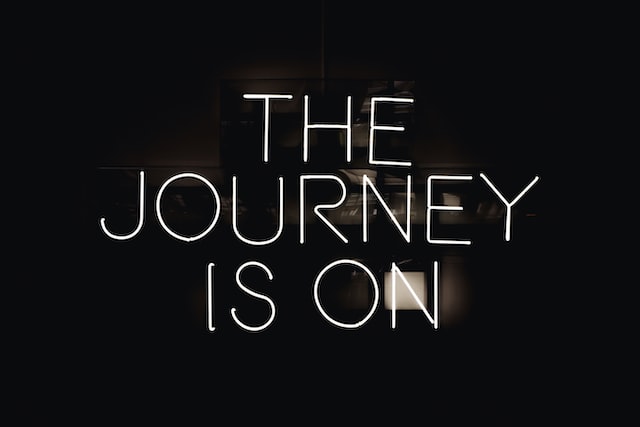Source: Unsplash | Maxime Horlaville
When embarking on a journey towards personal and professional growth, it’s important to start with the basics. That’s why we’ll begin with a deep dive into Abraham Maslow’s Hierarchy of Needs.
While Maslow’s theory may be a bit outdated, and we will revisit this topic down the road, for now, it still serves as a solid foundation for exploring our needs and motivations.
Maslow who!?
First, let’s briefly touch on who Maslow was and why his work matters. Abraham Maslow (1908 – 1970) was an American psychologist recognized as one of the founders of humanistic psychology Throughout his career, Maslow focused on understanding human needs, motivation, and self-actualization, as ways for human beings to maximize their wellbeing and achieve their full potential, which he felt were topics that were neglected in the field of psychology at the time (1940’s and 50’s). His theories emphasized the positive aspects of human nature and how humans differ from animals. Ideas that have had a significant impact on modern mental health.
Now, let’s clarify what Maslow meant by “need.” In addition to being a requirement, he added the implicit meaning of drive or motivation to it, which changes the concept slightly. A need is a condition that should or must be satisfied, driving us to act in certain ways.
Now we can finally start talking about what is considered Maslow’s most popular work, known by most as “Maslow’s Hierarchy of needs” or “Maslow’s pyramid of needs”. In fact, it is not a Pyramid, and should actually be referred to as Maslow’s “Theory of Human Motivation”. I agree it is not as exciting of a title, but once we get into the weeds you will notice it’s more accurate.
Maslow’s “Theory of Human Motivation” is an attempt to simplify and combine physical need theories and psychological / spiritual need theories which were popular at the time (1943) but were somewhat divisive and/or lacking when it comes to addressing the complexity of Human nature.
Maslow believed that humans instinctively arrange needs into 5 categories that can be organized in terms of pre-potency in the following order:
- The physiological needs.
- The safety needs.
- The love needs.
- The esteem needs.
- The need for self-actualization
This prepotency pointed out by Maslow is what led others to believe in a “Hierarchy” or “Pyramid” of needs but Maslow himself never stated this type of categorization was necessary.
First things first
First let’s look at physiological needs. Stating that physiological needs are the most important and basic of needs is not groundbreaking, as anyone who’s tried to work on an empty stomach can attest. This is because our instinctive drive for food, water, warmth and rest motivates us above all else.
These needs supersede any other, and this immutable fact is why we should not call this a “hierarchy of needs” nor think of it as a pyramid. We should also avoid treating them as a checklist. Instead, we should understand that the satisfaction of these needs requires constant and consistent attention.
Another interesting fact to point out about physiological needs, that highlights the complexity of the human condition, is the fact that other more complex needs can be confused with physiological needs.
A great example of this would be craving ice cream after a bad breakup or reaching out for a bag of chips when you’re bored.
Better safe than sorry
Next up are the safety needs. These can be as simple as the first, and also start building the narrative that shapes the entire “Theory of human motivation”. We’ve met our basic physical requirements, now we start to focus on our exterior physical self. Think about it for a second and you will realize why contrary to popular belief “Safety” does not come first. When food or water deprived our most basic instincts of survival will kick in, safety be damned. Once we are well fed and rested the consideration of where we are kicks in and this new concern takes priority in our minds. We long to be somewhere where no harm will come to us.
Although safety needs seem completely physical, there is a psychological layer that adds a large amount of complexity, which is the “sense of safety”.
Sometimes being physically safe is not enough or not possible, which is when and why we seek safety in routine. When outcomes and events are predictable, we can grow accustomed to them and learn to control our reactions. This in term leads to a, albeit sometimes distorted, sense of safety.
An easy example of this can be found in the everyday life of a construction worker. Even though a construction site is dangerous and loud, a veteran construction worker has a routine embedded in their mind. They can even enter a meditative state while performing tasks that would normally trigger a fight or flight reaction.
The heart needs what the heart needs
The third group of needs is that of Belonging and love. These are different from the first two, but once you look at the big picture it makes complete sense. We are now fed and feel safe which means that our physical needs are met. But Humans not animals, and Maslow emphasized this fact by stating that “Motivation theory should be human-centered rather than animal-centered”.
Up to this point the needs could have applied to any living being on earth. The love needs display the unique nature of humans to seek out affectionate relations with people in general. More importantly affection within a group of people that have assigned them a place in the group.
Think about it this way, you step in a class full of students, you are not hungry and are sure you are safe, what’s next? The first image that pops in my head is me looking around to see where I can sit. In the back of my mind, I’m already thinking about the people seated near me and if I will or will not get along with them.
This might not be exactly what popped up in your mind but i’m pretty sure if you are honest with yourself it was pretty close. This does not mean you are not unique or “your own person”. It only highlights the subconscious need we have to feel we belong and can interact comfortably with others. Of course, this is just a superficial first interaction example. With this in mind you can understand how much more important this need is when it comes to our community, our family and our group of friends.
It’s all about “me”
After our love needs are met, we turn our attention to esteem needs. At this point you have a place in society and as such now desire stability based on self-esteem, and the esteem of others. Recognition from others that are also part of your group. Recognition a by-product of the acknowledgement of one’s capacities and achievements.
The need for esteem is more complex than the needs that came before. It can encompass the desire for strength and reputation.
There is not much more to add to this need beyond the obvious which is that we are by nature a bit egocentric. This is not necessarily a bad thing. But I do believe it is something we have to keep in check. It highlights the fact that needs can be “over satisfied”, but that is a topic I will have to deep dive on and report back on soon.
The purpose of purpose
Finally, we have reached the pinnacle of needs, the need for Self-actualization. This is the most complex of needs to fulfill. In essence it can be described as the need to be what one is meant to be. But what the hell does that mean!? Well, it can actually mean something completely different for every person. It can also change throughout our lifetime.
Self-actualization is the goal of goals, it’s the ideal state we wish to achieve at any given moment. For some it can be a profession or activity. For others it can be an achievement that represents one has taken advantage of one’s full potential. I know, this one is a bit ambiguous. Self-actualization is pretty elusive, but this is exactly why it’s at the top of needs. It can only be focused on entirely once the other 4 needs are satisfied in a balanced manner.
The good news is that once we have recognized the need for self-actualization it can become a never-ending pool of motivation and growth.
This will be the cornerstone on which all other entries of this blog will be constructed. The never-ending desire to be better.
I can’t tell you exactly what self-actualization means, but I can tell what it does not mean. Self-actualization does not mean that each thing you do has to be bigger and better than the last. Nor does it mean that all accomplishments should be profound and transformational.
Self-actualization can be something as small as getting up 10 minutes earlier, smiling more, and even taking a minute for yourself.
Cognitive Scientist and Author Scott Bayy Kaufman does an amazing job of breathing new life into self-actualization and the fulfillment of needs in his book “Transcend: The new Science of Self Actualization”
My final thoughts
I honestly believe that what Maslow was trying to tell us with his “Theory of human motivation” was that needs are the fuel of actions. Action is the foundation of self-actualization. And last but not least self-actualization is a never-ending journey. A Journey that leads us to becoming the best version of ourselves every day. An eternal work in progress.
Phew, that was a lot to take in, but I feel we are now ready to go on this amazing journey of self-actualization together.


